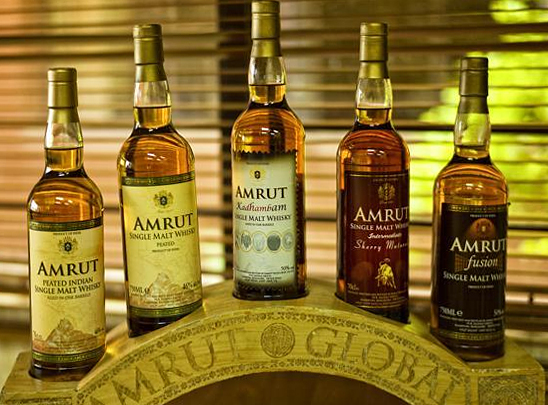Spotlight on Indian Whisky
Whisky. Or Whiskey. Either way, the word entices the soul, doesn’t it? It rolls off the tongue just like the drink itself. The origin of the word comes from the Scottish Gaelic words Uisge Beathe, or “Water of Life”. The origin stems from the historical use of distilling in medicine through the 8th-9th century AD that can be traced to accounts in Egypt and then European monasteries, places that allowed the secrets of distillation to stay with the monks but slowly made its way to Ireland and then Scotland. The popularity of Scotch is attributed to a strict attention to detail, great sources of water and barley, the widespread use of copper and most importantly, the illicit stills through the 16th - 18th centuries that allowed many smaller private distillers to hone their craft and perfect the aging process (as they avoided the tax collectors). Thus, was born the single malt and the rest is (pardon the over used expression) history! Over a half a millennium later, Scotch whisky is sought after. It truly is a versatile elixir, whisky. Whisky experts have shied away from change and innovation through the early 20th century, trying to hold on to exclusivity and the demand. But now there are whiskies in demand from places other than America, Canada, Ireland, Scotland and Japan. Taiwan is making wonderful whisky (with producers such as NY International Spirits Competition-winning Kavalan) as well as Australia, Sweden, South America, and Africa and South Africa. However, what came as a personal shock a few years ago was the discovery that India is producing some incredible single malts, such as those from Amrut (Bangalore) and Paul John (Goa). They have put India on the world whisky map and made experts from all over the world take notice!
The History and the Pioneers
Scotch laws influence the process, but there are some variations. Initially, most Indian whisky in the marketplace consisted of grain neutral spirit plus whisky essence and molasses sold as "whisky," which could never be exported into America or the EU or UK. But because of these two modern stalwarts, the industry has blossomed into a large exporter and has won praises from first time drinkers and experts alike.
I had an opportunity to reach out to the teams at Amrut and Paul John to gain some perspective about the two brands and their responses have indeed given me some great insight into the brands’ past, present and future. Firstly, it's probably worth mentioning that both Amrut Distilleries and John Distilleries have been producing other spirits and whiskies for some years now - Amrut since 1948 and John since 1996. Their foray into single malts were quite different, though. Amrut single malts were inspired by an MBA thesis conducted by the grandson of the founders (in Newcastle); Paul John's began when their charismatic leader, Mr. Paul John, used his instinct to research the market. He mentions that there was a lot of research into the use of the 6 row barley that grows in India and it was found that it imparted a unique flavour to the final product. Amrut has also extended its reach into making some world class rum as well with the brand Two Indies. Paul John instead looks to increase its repertoire of single malts with new expressions, as well as some high end, mature brandy. That brand is now available in 25 countries and looks to broaden its reach even more in the next few years. Amrut, meanwhile, has preferred to build a brand image with a limited range available in fewer locations and thereby creating an increase in demand through its exclusivity.
Indian Whisky Has Its Own Unique Set of Challenges
One distinguishing feature of Indian single malts is the aforementioned use of 6 row barley vs the traditional 2 row that is used everywhere else in the world. It is believed that though the malt is not as well modified for whisky making or fermentation, the character that is gained is worth the loss in extraction. The unique spicy flavors that are provided by the grains is what has put Indian single malt on the world map, according to both sources. Huge challenges are faced with the warmer climates as well, causing a larger loss in the infamous angels share. Other business challenges present themselves, such as those from government policies, and red tape through procedures. However, these two pioneers managed to power along, eventually able to export their whisky to UK and other countries.
A Few To Explore
As far as trying these great whiskies is concerned, one cannot go wrong with the Amrut Fusion,- a smooth, very flavorful single malt that pleases both the beginner and the expert alike. There are also limited editions such as the Greedy Angel and their much sought after sherry cask that are well worth the hunt to find. As for Paul John, the Peated Select Cask is a well-balanced introduction to the smoky styles. And if you find their single cask expressions in the wild, definitely try them!
Success!
Paul John now boasts 1700 employees worldwide and Amrut 750, with an expectation to expand to much more very soon. The new iterations of both brands are constantly sought after by new whisky drinkers and collectors alike. This new trend will surely come to fruition as the laws will get easier to establish Indian whisky distilleries, and competition will push the existing brands to greater heights. As the country accepts the finer things in life, such as single malt, this appreciation from an educated customer base will also grow this budding industry and continue increasing its foothold worldwide.




